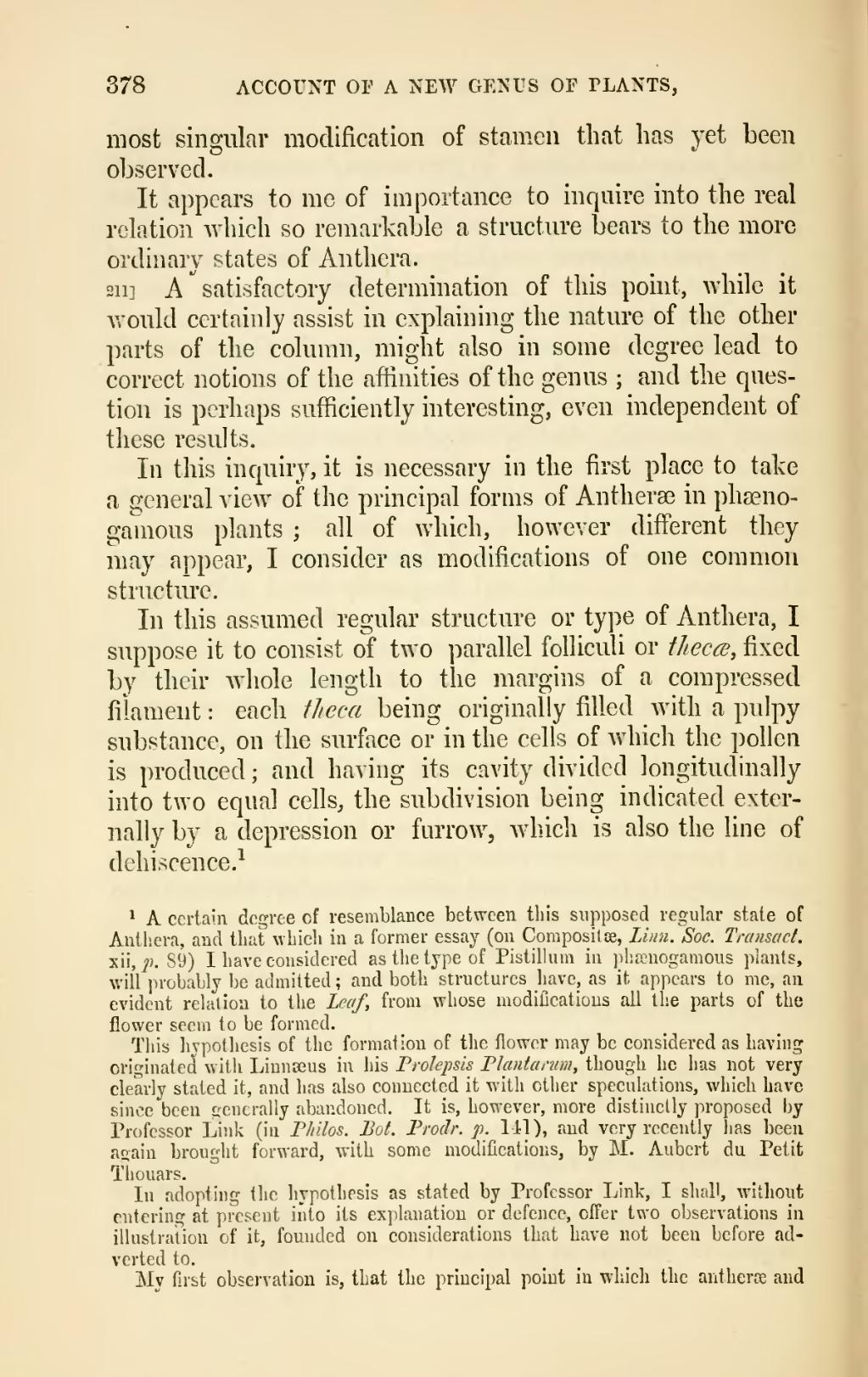378 ACCOUNT OF A NEW GENUS OF PLANTS,
most sinoiilar modification of stamen that has yet been observed.
It appears to me of importance to inquire into the real relation which so remarkable a structnre bears to the more ordinary states of Anthera.
211] A "satisfactory determination of this point, while it vronld certainly assist in explaining the nature of the other parts of the column, might also in some degree lead to correct notions of the affinities of the genus ; and the ques- tion is perhaps sufficiently interesting, even independent of these results.
In this inqniry, it is necessary in the first place to take a general view of the principal forms of Antherse in phaeno- gamous plants ; all of which, however different they may appear, I consider as modifications of one common structure.
In this assumed regular structnre or type of Anthera, I suppose it to consist of two parallel folliculi or t/wc(^, fixed by their whole length to the margins of a compressed filament : each theca being originally filled with a pulpy substance, on the surface or in the cells of Avhich the pollen is produced ; and having its cavity divided longitudinally into two equal cells, the subdivision being indicated exter- nally by a depression or furrow, which is also the line of dehiscence.-^
1 A certain degree of resemblance between this supposed regular state of Anthera, and that which in a former essay (on Composilse, Li^in. Soc. Transact. xii, ;?. 89) I have considered as the type of Pistillum in phssnogamous plants, will probably be admitted; and both structures have, as it appears to me, an evident relation to the Leaf, from whose modifications all the parts of the flower seem to be formed.
This liypothesis of the formation of the flower may be considered as having originated with Linuteus in his Prolepsls Flantarum, though he has not very clearly stated it, and has also connected it with other speculations, which have since been generally abandoned. It is, however, more distinctly proposed by Professor Link {in P/tilos. Bot. Prodr. p. 141), and very recently has been again brought forward, with some modifications, by M. Aubcrt du Petit Thenars.
In adopting the hypothesis as stated by Professor Link, I shall, ^yithout entering at present into its explanation or defence, offer two observations in illustraFion of it, founded on considerations that have not been before ad- verted to.
My first observation is, that the principal point in which the antherre and
�� �
